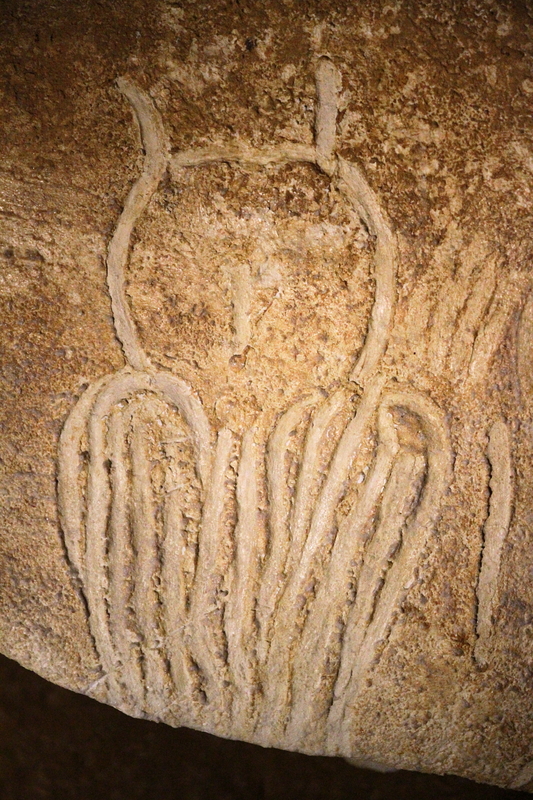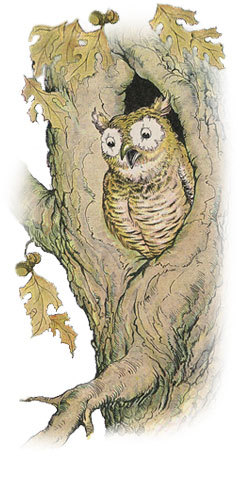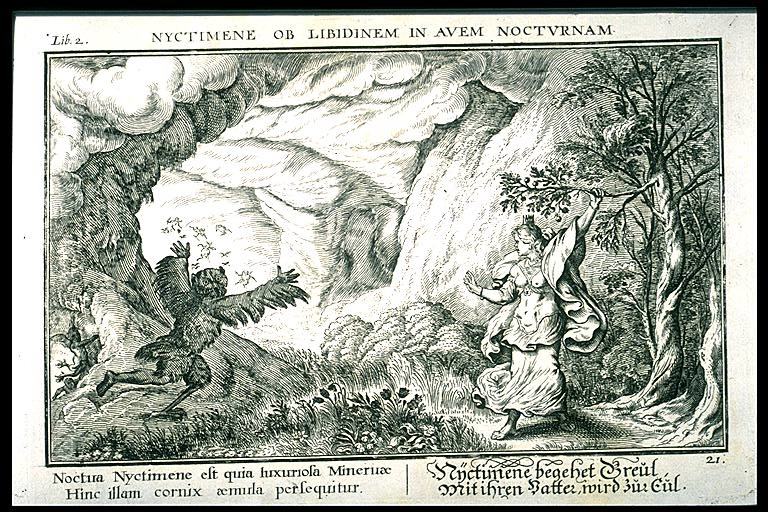Classical Antiquity & Earlier
The earliest depictions of owls date to this time frame, from cave paintings in southern France to the depictions of the owl in Greco-Roman culture. Owls begin to find there way into European fables as well as depiction in coinage and other symbolism.

Owl Cave Painting
In 1994, the Chauvet-Pont-d’Arc Cave was discovered in southern France. It contains over a thousand ancient paintings, mostly depicting animals dating more than 30,000 year ago. Among these depictions, we can find what can be observed, even to the untrained laymen, of a creature clearly resembling an owl. Although the stories behind these paintings are difficult to discover due to their age, they give an indication that the owl had some symbolic significance as it was included in the depictions.

Aesop's Fables: The Owl and the Grasshopper
First composed in ancient Greece by a slave and storyeller by the name of Aesop, Aesop's Fables feature stories wherein anthropomorphic animals impart onto the reader important moral lessons. By personifying animal characters, Aesop's fables naturally characterize specific animals as similar to their human counterparts. Thus when reading his fable titled "The Owl and the Grasshopper", one not only learns the importance of seeing past false flattery but also that Aesop, and susbquently the Greek world he represents, viewes owls as both wise and cunning. In choosing to lure the grasshopper into her nest instead of foolishly hunting after it, Aesop's owl exhibits similarly wise qualities as the goddess Athena that it often represents; laying forth the foundation of the owl as a wise creature that will remain prevalent until the modern age.

The Owl of Athena Coin
This is a picture of an Ancient Greek coin depicting the Owl of Athena. In Ancient Greek mythology, Athena is a goddess who is said to represent wisdom (Bontzorlos). An important part of Athena’s mythology is her companion, an owl, who generally is depicted resting atop her shoulder (Bontzorlos). The owl’s association with the Ancient Greek goddess of wisdom displays the longstanding relationship between owls and the trait of wisdom.

Nyctimene
Though highly disputed, the myth of the princess Nyctimene of Lesbos is one whose narrative is shrouded in mystery. Written about sometime between the late 1st century BCE and the 4th century AD by a number of Latin authors, Nyctimene's transformation into an owl by the goddess Athena is amongst the most confusing. By Hyginus' account, the princess was a victim of rape and imprisonment at the hands of her father. In others accounts, like that of Servius and Ovid in their respective works, her unethical romantic affairs are left purposefully ambiguous with the moral blame falling squarely upon the princess' shoulders. In all retellings, however, it is Athena who takes pitty upon the desolate Nyctimene, transforming her into an owl as a means for her to escape her imprisonment. In this etymological story, the owl of Nyctimene represents the freedom that owls, and their ability of flight, symbolized in both ancient Greece and Rome.